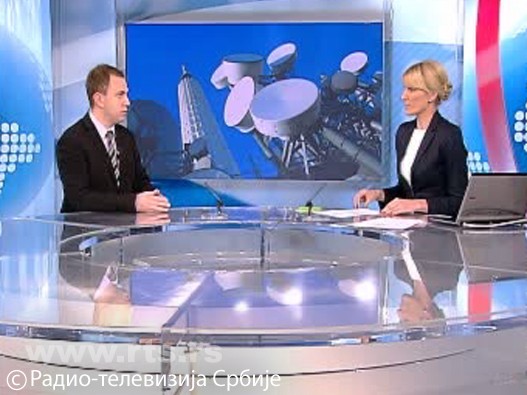There are no more technical obstacles to the completion of the transition from analog to digital television broadcasting, said on RTS the State Secretary in the Ministry of Trade and Telecommunications Stefan Lazarević.
The State Secretary in the Ministry of Trade and Telecommunications Stefan Lazarević said that there are no more technical obstacles to the completion of the transition from analog to digital television broadcasting. Lazarević noted that the initial network will be expanded using the frequencies of TV Avala.
In his interview on “Dnevnik” on RTS, Lazarević said that the initial network will be expanded using the frequencies of TV Avala, and that it will be broadcasted from 35 locations. He noted that the Ministry adopted the Rule Book on the allocation of frequencies last week, thus creating the conditions for a speedy and efficient completion of the digitalization process.
“TV Avala used a network which was composed of 33 frequencies, and about 15 are needed for the expansion of the initial network”, explained Lazarević.
He added that the remaining 18 frequencies will stay available, and if someone were to start using these frequencies tomorrow, this would not, in any way, hinder or stop the digitalization process.
From an economic point of view, he added, it would even be good because the frequencies are paid for, which results in financial gain for the state.
How they will be used, whether for a new local or national television depends on the institutions that are responsible for defining the media policy of the country, said Lazarević.
According to him, the expansion of the initial network puts into use the equipment that Serbia received from the EU, while on the other hand better conditions for informing the public are created.
Lazarević stated that after the expansion, 80% of citizens will be able to watch digital signal.
Moreover, in this way the conditions are created for simulcast, i.e. the simultaneous broadcasting of analog and digital programs.
“The transition will not happen in one day, rather we will agree with the national, regional and local broadcasters, and associations that follow media policy on how long that simulcast should take”, explained Lazarević.
He reminded that the main advantages of digitalization are quality sound and picture, a wider choice of programs, benefits for people with disabilities, because now on the terrestrial television people are watching two or three programs, while after digitizing there will be at least 16 programs.
Lazarević added that they will try to provide resources for the socially disadvantaged categories so as to ease any kind of financial problems they might have when it comes to the digitalization process.











